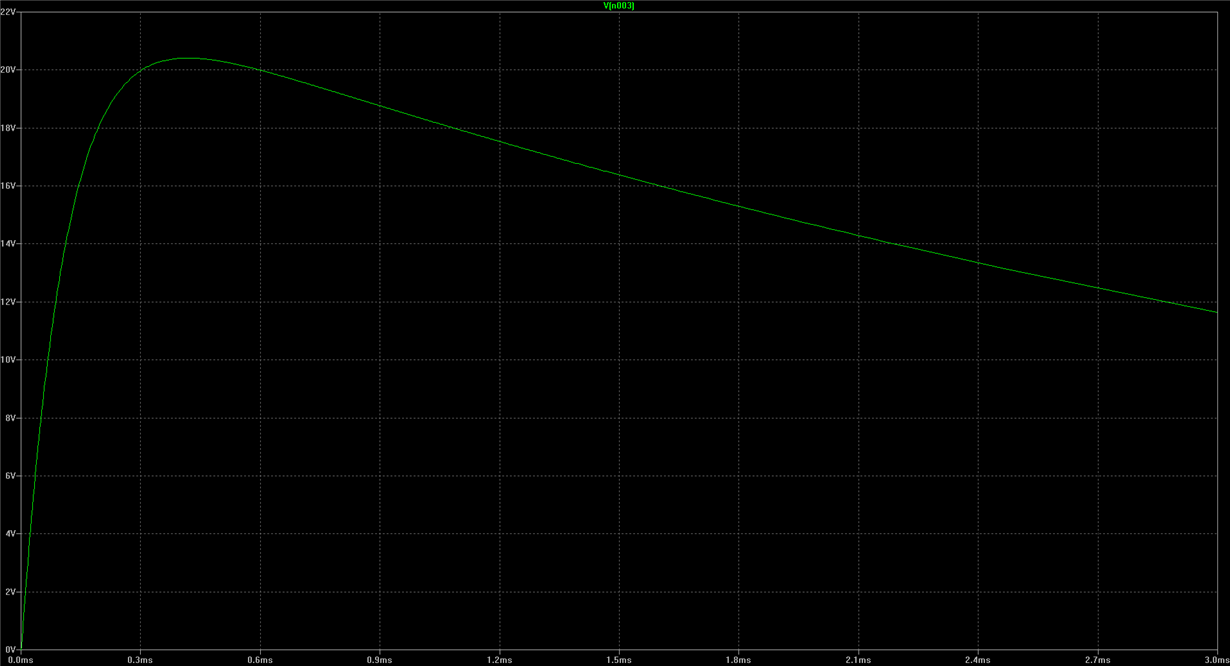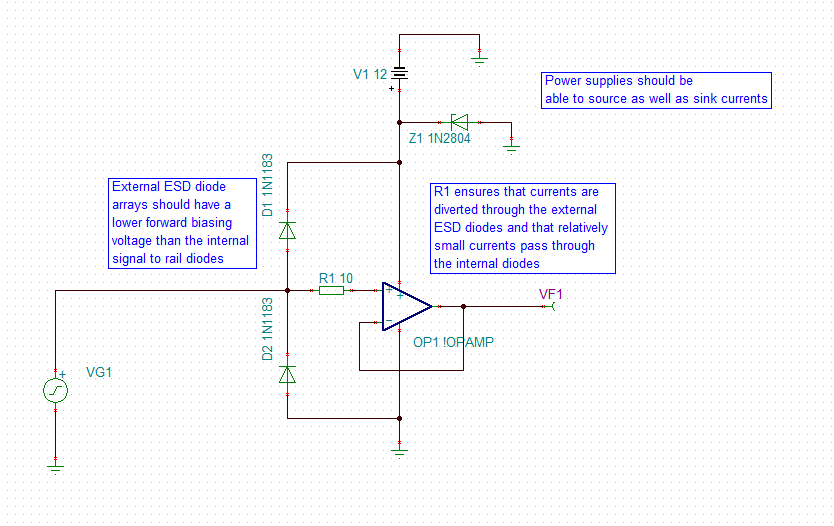Hi
I plan to use the OPA2234U single supplied (+12V) in an application to measure a temperature (PT100).
During a lightning event (750V peak) the input filter limits the Voltage at the Input pins up to ~21V for a short (~2ms) time.
The absolute maximum ratings of OPA2234 state an input voltage of (V+)+0.7V. Because of the voltage I assume that the input is internally protected by a diode.
- Is it possible, that the inputs can withstand such a voltage?
- Does the current has to be limited (no value is stated in the Datasheet)?
Other lightning protection solutions will lead to a greater decease of accuracy due to leakage currents.




